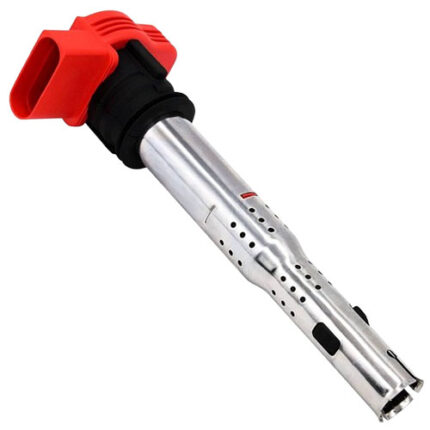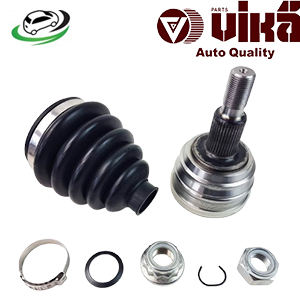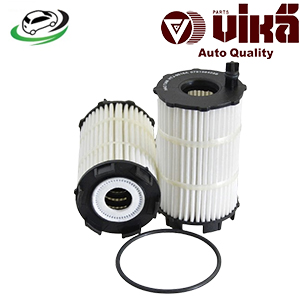-12%
Get Oil Filter Audi B7 RS4/B8 RS5/B8 S5/C6 A6/C6 S6/D3 A8/D3 S8/MK1 R8 / VW Touareg 1/2-V8 079198405B
The oil filter is a crucial component of an internal combustion engine’s lubrication system, playing a key role in maintaining engine health and performance. It filters out contaminants from the engine oil, ensuring that only clean oil circulates through the engine’s moving parts. In this comprehensive exploration, we’ll delve into the design, function, types, common issues, and maintenance of oil filters.
Design and Function
Design:
- Housing:
- Metal Canister: The oil filter is typically housed in a metal canister, which provides durability and protection. This canister is designed to withstand the high pressure and temperature conditions within the engine.
- Base Plate: The bottom of the oil filter features a base plate with threaded holes that allow it to be screwed onto the engine block. This plate also contains inlet holes for oil to enter the filter and an outlet hole for the filtered oil to exit.
- Sealing Gasket: A rubber gasket around the base plate ensures a tight seal between the filter and the engine block, preventing oil leaks during operation.
- Filter Media:
- Cellulose and Synthetic Fibers: The filter media inside the oil filter is typically made of cellulose, synthetic fibers, or a combination of both. These materials are arranged in pleated layers to maximize the surface area for filtration.
- Multi-Layer Construction: High-quality oil filters often use multiple layers of filter media, each designed to capture different sizes of contaminants. The outer layers trap larger particles, while finer particles are captured by the inner layers.
- Internal Components:
- Center Tube: The filter media is wrapped around a perforated center tube, which provides structural support and allows the filtered oil to flow back to the engine.
- Anti-Drainback Valve: Some oil filters include an anti-drainback valve, which prevents oil from draining out of the filter when the engine is turned off. This valve ensures that the filter remains filled with oil, reducing wear during engine start-up.
- Bypass Valve: The bypass valve is a critical safety feature that allows oil to bypass the filter if the filter becomes clogged or if the oil is too thick (e.g., in cold weather). This ensures that the engine continues to receive oil even if the filter is compromised.
- End Caps: The filter media is typically secured between two end caps, which help maintain the shape and integrity of the filter element. These caps are usually made of metal or plastic.
Functionality:
- Contaminant Filtration:
- Capturing Debris: As oil circulates through the engine, it picks up contaminants such as metal shavings, dirt, carbon particles, and other debris. The oil filter traps these particles, preventing them from circulating back into the engine.
- Ensuring Clean Oil Flow: By filtering out contaminants, the oil filter ensures that only clean oil reaches the engine’s moving parts, reducing wear and prolonging engine life.
- Maintaining Oil Pressure:
- Flow Regulation: The oil filter plays a role in maintaining the correct oil pressure within the engine. It must allow sufficient oil flow while filtering out contaminants. A clogged filter can restrict oil flow, leading to low oil pressure and potential engine damage.
- Bypass Function: If the filter becomes clogged, the bypass valve opens, allowing unfiltered oil to flow to the engine. This prevents oil starvation, although it means that contaminants may temporarily bypass the filter.
- Cold Start Protection:
- Anti-Drainback Valve: During cold starts, when oil is thicker and engine components are more vulnerable to wear, the anti-drainback valve ensures that the filter remains filled with oil, providing immediate lubrication upon start-up.
- Preventing Dry Starts: The presence of oil in the filter during start-up helps prevent “dry starts,” where the engine runs momentarily without sufficient lubrication.
Importance of the Oil Filter
- Engine Longevity:
- Wear Reduction: By removing contaminants from the oil, the oil filter significantly reduces engine wear. Clean oil lubricates engine components more effectively, reducing friction and extending the life of the engine.
- Preventing Damage: Contaminants such as metal shavings can cause significant damage to engine components if not filtered out. Over time, these particles can cause scoring, pitting, and other forms of damage, leading to costly repairs.
- Oil Quality Maintenance:
- Preserving Oil Properties: The oil filter helps maintain the quality of the engine oil by preventing contaminants from degrading its lubricating properties. This is crucial for maintaining optimal engine performance and efficiency.
- Extending Oil Life: By keeping the oil clean, the oil filter can help extend the interval between oil changes, reducing maintenance costs and environmental impact.
- Protection Against Catastrophic Failure:
- Preventing Oil Blockages: A properly functioning oil filter prevents blockages in the lubrication system, which could otherwise lead to catastrophic engine failure. Oil blockages can cause a loss of oil pressure, leading to severe damage to the engine’s internal components.
- Safety Net: The bypass valve in the oil filter serves as a safety net, ensuring that the engine continues to receive oil even if the filter is compromised. This feature is critical in preventing sudden engine failures.
Types of Oil Filters
- Spin-On Oil Filters:
- Conventional Design: Spin-on oil filters are the most common type of oil filter found in vehicles. They consist of a metal canister that houses the filter media, and they are easily screwed onto the engine block.
- Ease of Replacement: Spin-on filters are designed for easy replacement during routine oil changes. They can be removed and replaced without the need for specialized tools, making them convenient for both professional mechanics and DIY enthusiasts.
- Cartridge Oil Filters:
- Eco-Friendly Design: Cartridge oil filters consist of a replaceable filter element that fits inside a reusable housing. This design reduces waste, as only the filter element needs to be replaced, not the entire housing.
- Widespread Use: Cartridge filters are becoming increasingly common in modern vehicles due to their environmental benefits and improved filtration efficiency.
- Magnetic Oil Filters:
- Additional Filtration: Magnetic oil filters contain a magnet that attracts and traps metal particles in the oil. This provides an additional layer of protection for the engine by removing metal contaminants that could cause wear.
- Complementary Function: Magnetic filters are often used in conjunction with traditional filter media to enhance overall filtration performance.
- High-Efficiency Oil Filters:
- Premium Filtration: High-efficiency oil filters are designed with advanced filter media that captures smaller particles and provides better overall filtration compared to standard filters. These filters are often used in high-performance engines or vehicles that operate in harsh conditions.
- Longer Service Life: High-efficiency filters are typically designed to last longer than standard filters, making them a good choice for vehicles with extended oil change intervals.
- Bypass Oil Filters:
- Supplemental Filtration: Bypass oil filters are used in addition to the primary oil filter to provide finer filtration. They filter a small portion of the oil flow at a time, removing even smaller particles than the primary filter.
- Extended Engine Life: Bypass filters are often used in heavy-duty or high-mileage vehicles to extend engine life by providing superior filtration.
Common Issues with Oil Filters
- Clogging:
- Restricted Oil Flow: Over time, the oil filter can become clogged with contaminants, restricting the flow of oil through the filter. This can lead to low oil pressure and reduced lubrication, increasing the risk of engine damage.
- Bypass Activation: When the filter becomes clogged, the bypass valve opens to allow unfiltered oil to reach the engine. While this prevents oil starvation, it also means that contaminants can circulate through the engine, potentially causing wear.
- Leakage:
- Seal Failure: The rubber gasket that seals the oil filter to the engine block can degrade over time, leading to oil leaks. A leaking oil filter can cause a loss of oil pressure and increase the risk of engine damage.
- Improper Installation: If the oil filter is not properly tightened or if the gasket is damaged during installation, it can lead to oil leaks. Ensuring that the filter is installed correctly and that the gasket is in good condition is essential to preventing leaks.
- Internal Damage:
- Media Collapse: The filter media inside the oil filter can collapse under extreme conditions, such as severe cold, excessive pressure, or poor-quality oil. A collapsed filter cannot effectively filter oil, leading to poor engine lubrication and increased wear.
- Valve Failure: The anti-drainback or bypass valves inside the oil filter can fail due to manufacturing defects or wear. Valve failure can lead to oil drainback (causing dry starts) or unfiltered oil reaching the engine.
- Incorrect Filter Selection:
- Compatibility Issues: Using the wrong oil filter for a vehicle can lead to serious problems, such as inadequate filtration, improper sealing, or insufficient oil flow. It’s important to select an oil filter that is specifically designed for the vehicle’s make, model, and engine.
- Performance Loss: An incompatible oil filter may not provide the necessary flow rate or filtration efficiency, leading to reduced engine performance and increased wear.
Maintenance and Replacement
- Regular Replacement:
- Follow Manufacturer’s Recommendations: The oil filter should be replaced at regular intervals according to the vehicle manufacturer’s recommendations, typically during every oil change. Regular replacement ensures that the filter continues to perform effectively and prevents clogging.
- Consider Driving Conditions: If the vehicle is frequently driven in harsh conditions, such as extreme temperatures, dusty environments, or stop-and-go traffic, it may be necessary to replace the oil filter more frequently.
- Proper Installation:
- Tightening: When installing a new oil filter, it should be tightened according to the manufacturer’s specifications. Over-tightening can damage the gasket or the filter itself, while under-tightening can lead to leaks.
- Lubricating the Gasket: Before installing a new filter, it’s a good practice to lightly coat the rubber gasket with clean engine oil. This helps ensure a proper seal and makes it easier to remove the filter during the next replacement.
- Inspection:
- Check for Leaks: After replacing the oil filter, it’s important to start the engine and check for any leaks around the filter. If any leaks are detected, the filter should be re-tightened or replaced.
- Monitor Oil Pressure: Keeping an eye on the oil pressure gauge or warning light can help detect issues with the oil filter or lubrication system. Low oil pressure may indicate a clogged filter or a leak.
- Use Quality Filters:
- OEM or High-Quality Aftermarket Filters: It’s important to use OEM (Original Equipment Manufacturer) or high-quality aftermarket oil filters that meet or exceed the vehicle manufacturer’s specifications. Low-quality filters may not provide adequate filtration or durability.
Follow us on Facebook for more parts.



